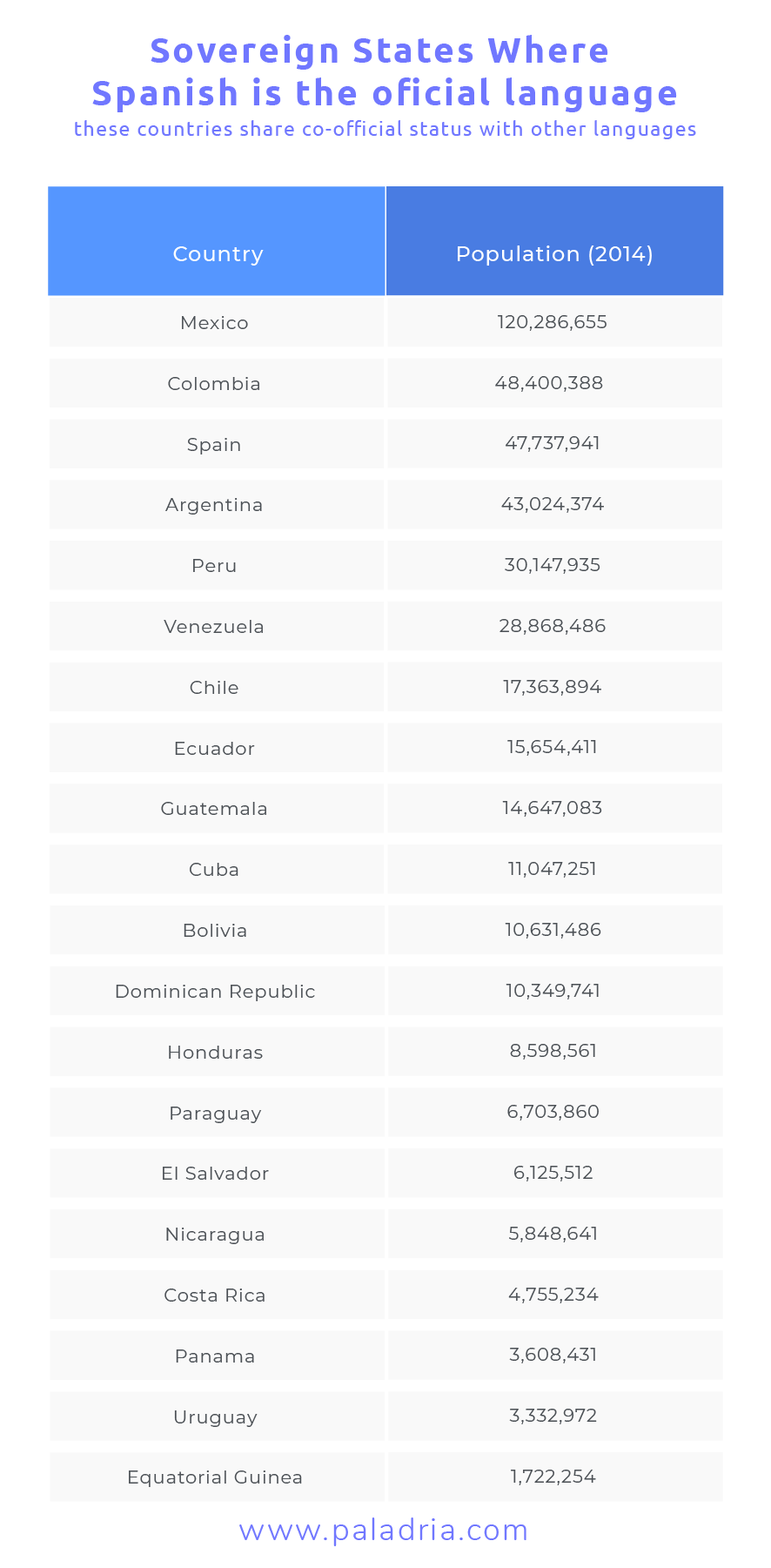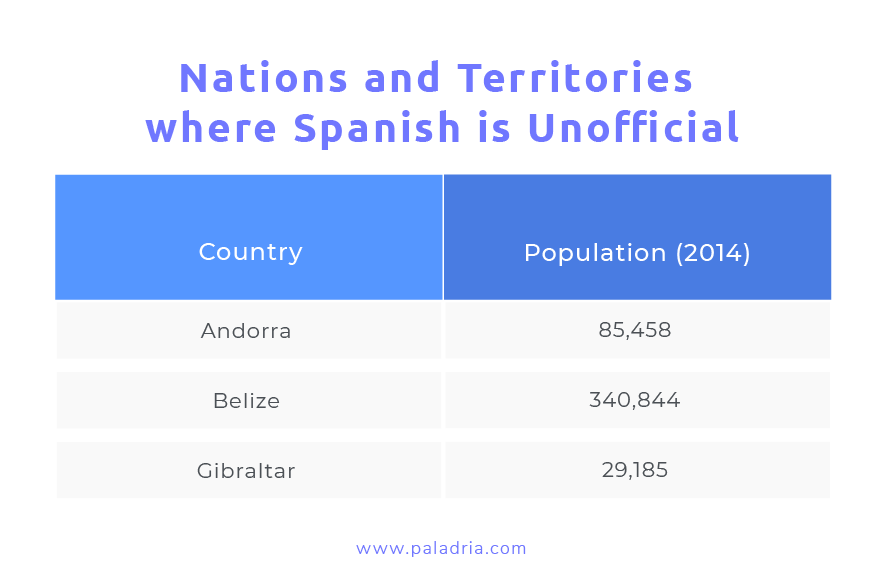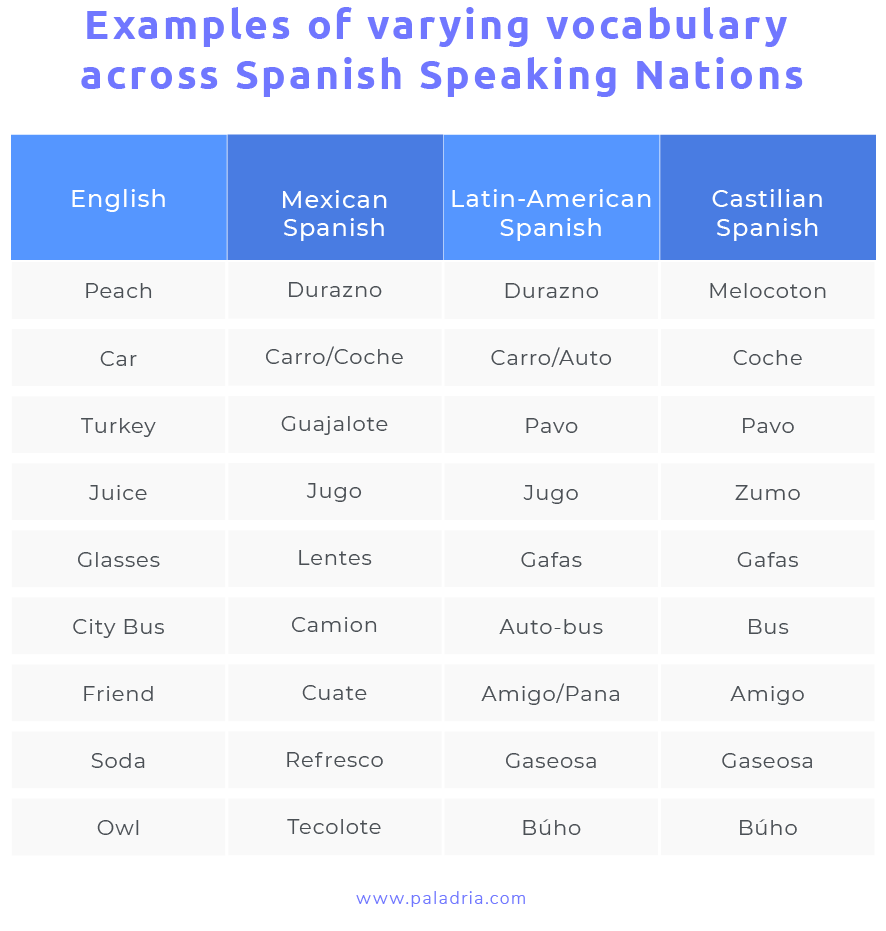Due to the proximity of the countries, chances are that the Spanish that most Americans are familiar with, is Mexican Spanish. Mexican Spanish greatly differs from other Central American Spanish, as well as South American Spanish and Castilian Spanish in Spain. Each country has a wide variety of dialects, accents, and terms that diverge within the region itself. Consequently, the further apart the regions, the more the type of Spanish spoken will vary. How did Spanish develop? Where is Spanish spoken and what are the ways in which Spanish contrasts across nations? Just how different is each form of Spanish? Do the translation prices change depending on the Spanish? Spanish has an origin story and it is absolutely fascinating.
Need a Spanish translation? Contact us
A Brief Look into the History of Spanish
Spanish is one of the most widely spoken Romance languages both in terms of countries it is spoken in and the number of speakers it has and is one of the world’s most spoken native languages. Due to how language speakers are measured, it is hard to pull an exact number. Regardless, Spanish is arguably one of the top five languages spoken in the world. It originated in the Iberian Peninsula, Hispania, which is modern-day Spain and Portugal. Before the Roman empire, a few languages were spoken in the peninsula, including an ancient form of Basque, Greek, and some Celtic Languages.
After Rome conquered these areas, however, Latin was imposed as the official language. Traders, farmers, and the like developed their own dialect of Latin referred to as “Vulgar” Latin. Yet the development of the language did not seize there, and following years of invasion starting with the Moors from Northern Africa and the Visigoths from Central Europe, then reclaimed by Christians, the Spanish language began to take shape. It was influenced not only by the Iberians and the aforementioned but an array of other cultures such as the Celts, Greeks, and the Vandals, just to name a few. In short, Spanish stems from “vulgar” Latin which was then influenced by a plethora of cultures. It was not until 1713 that the Real Academia was founded and established the criteria and grammar for Spanish. It is said that the standard written form was developed in the 13th century in the Kingdom of Castile in Toledo, hence the word for Spanish in Spain, referred to as “Castellano”.
Countries Where Spanish is Spoken
Spanish, or Castilian as it is referred to in Spain and other Spanish speaking countries, is spoken as a native language by more than 450 million people around the world. In the United States, there are 12 million bilingual Spanish speakers, which is about 13 percent of the population.

While Spanish is the official language of many countries (or at least one of the official languages) there are other territories in which Spanish is either a second language, or a Spanish-based Creole is spoken . In countries like The United States or Belize, many times information in Spanish is readily available for its citizens.

There are also several Spanish-based Creole languages spoken around the world. In the Philippines, there is a variety of creole languages known as Chavacano. The one that is considered to have the most speakers today is Zamboangueño, while the other languages are either endangered or extinct.
Palenquero is a creole language spoken in Colombia in the village of San Basilio de Palenque. The ethnic group that speaks this language only had 2,500 people in 1989. The village was founded by Maroons (fugitive slaves) and Native Americans. In 1998 only 10% of the younger population spoke Palenquero, which was a language mostly spoken by the Elders.
Similarities and Differences in Spanish
While there are many Spanish speakers in the world, and most Spanish speakers will understand each other throughout the world, there are still words that will cause great confusion among the different Spanish speaking territories. Take, for example, the word for a sandwich made with a bun in Mexico. You would say that you want a “torta”, which in Colombia would mean “cake”, and in Spain another type of sweet desert (but not a cake.) Or even more complicated still, consider the word for “drinking straw” in English: which is “popote” in Mexico, “pitillo” in Colombia, “calimete” in Dominican Republic, “sorbete” in Ecuador, “pajilla” in Nicaragua, and the list goes on. Knowing these differences is not just for fun banter over milkshakes and a sandwich, but also how not to offend someone. Words that have no offense in one place are highly offensive in another.
For example while in Spain or Latin America there is a very useful verb that means “to take”, “to lift”, “to grab”, and other similarities, that same verb only means one thing in Mexico which has very sexual connotations. If the differences are not clearly marked, it will completely change the mood of a text. A Spanish translation, therefore, must go hand in hand with localization services and keeping the target audience in mind. As might be the case with other languages, Spanish is not a one-size-fits-all situation.

Not a comprehensive list. Latin American Spanish is not a monolith and will also have more variations of words within the continent.
English to Mexican Spanish Translation
While none of the countries or nations that speak Spanish should be treated like a monolith, this is especially true in Mexico and Latin America. Latin America has many different countries that make up Central and South America, each with its own accent and set of words that differ depending on the region. (See graph 3 for an example of what happens when you try to say “popcorn” across the nations.) One of the unique traits that Mexican Spanish has, is that it is also highly influenced by Aztec and Mayan languages. The largest indigenous language that is still spoken in Mexico today is Náhuatl, the language of the Aztecs.
Náhuatl still has over 1,300,000 speakers. The Nahuatl language (and its land) gave the world delicious foods and the accompanying words that we are still grateful for today. Two such examples are chocolate (xocolātl) and avocado, which in Spanish is referred to as “aguacate”, much like the original word for it, “ahuacatl”, which means testicle, because of its resemblance. Put that on your toast!
However, while we may still find much of the Nahuatl influence all over the world, in Mexico it is particularly present. Take the word for flea market, which in Spanish one refers to the same way, “mercado de pulgas”. In Mexico you might be understood if you say “mercado de pulgas”, but what is most used and known is “tianguis”, from the Nahuatl word, “tiyānquiztli” which means exactly that: a market. While the rest of Latin America might say “una cometa” to refer to a kite, Mexicans will refer to it as “papalotes”, which comes from the word “papalotl”, the word for butterfly.
Mayan words are also still used as well. The word “cenote” in both Spanish and English comes from the word “tz’onot” in Mayan, which refers to a natural sinkhole which can be found all along the Yucatan.
The names of the Mexican states themselves tend to be Nahuatl words, as Zacatecas is “place with lots of grass” from the Nahuatl word “zacatl” which means grass. There are many other words referring to food or animals that in Mexico might have their own unique word deriving from Nahuatl or Mayan, which will be unrecognized outside of the country (see graph 3).
The Difference Between Translation and Localization
Localization and translation are not the same thing, as you cannot translate without localization. That being said, it is possible to do localization without translation. While translating is the transfer of words from one language to the other, localization adapts the text to fit a particular culture. (For the difference between localization and internationalization, click here). This is important to do in other languages, however it is arguably particularly important in Spanish, it being such a widely spoken language across the world. While a “standardized” Spanish could be used for all audiences in things such as an instruction manual, if a project is not personalized it misses the chance to reach an audience at a more relatable level. In short, while a translation helps an audience understand a text, localization makes sure that the text speaks to the audience.
Hiring a Spanish Translator
Due to the extensive differences in the Spanish language and culture and Mexico’s unique traits, when hiring a translator, it is important that they be familiar with the vocabulary and culture of the intended audience. If a text is going out to various countries, then the hiring process should not only include a translator, but also the process of localization. Therefore, going with a company rather than a freelance translator might be more efficient. A competent company knows to have a team behind every project. The team must be made up of not only an expert translator in their field and native speaker of the target language, but also an editor, and someone to oversee localization.

There is such a thing as a standard level of Spanish for things such as official documents and instruction manuals, but even then they should be treated delicately and looked at scrupulously to make sure there aren’t any context-specific words that need to be changed.
In regard to payment, translators are generally paid per word, and their price usually reflects the years of experience and training they have done to get where they are. Different projects will affect the price, as well as desired turnaround time and deadline compliance. While you can go here to read about pricing more extensively, you can expect to pay an English-Spanish translator anywhere from .12 USD cents to .20 USD cents. This may vary depending on location of the business, and who the translator is, so this average is based on translators located in the USA, Canada, and parts of Europe. The important thing is to pay a translator fairly for a job that is not just transferring a word from one language to the next, but also adapting it to the appropriate cultural context and audience.
For more information on our Spanish translators, write us here.

Master Language Learning with Mosalingua
With Mosalingua's platform, you can immerse yourself in Spanish, French, Japanese, and more. Learn independently, while also benefiting from a committed team's support, ensuring continuous motivation and expert guidance every step of the way. With an impressive 4.5/5 ★ rating on the app and endorsements from Cosmopolitan, HuffPost, and Mashable, join the thriving community of language learners who rely on Mosalingua as their comprehensive solution for fast and effective language acquisition.
This website may contain affiliate links, which means we may earn a commission if you click on or make a purchase through the link.



